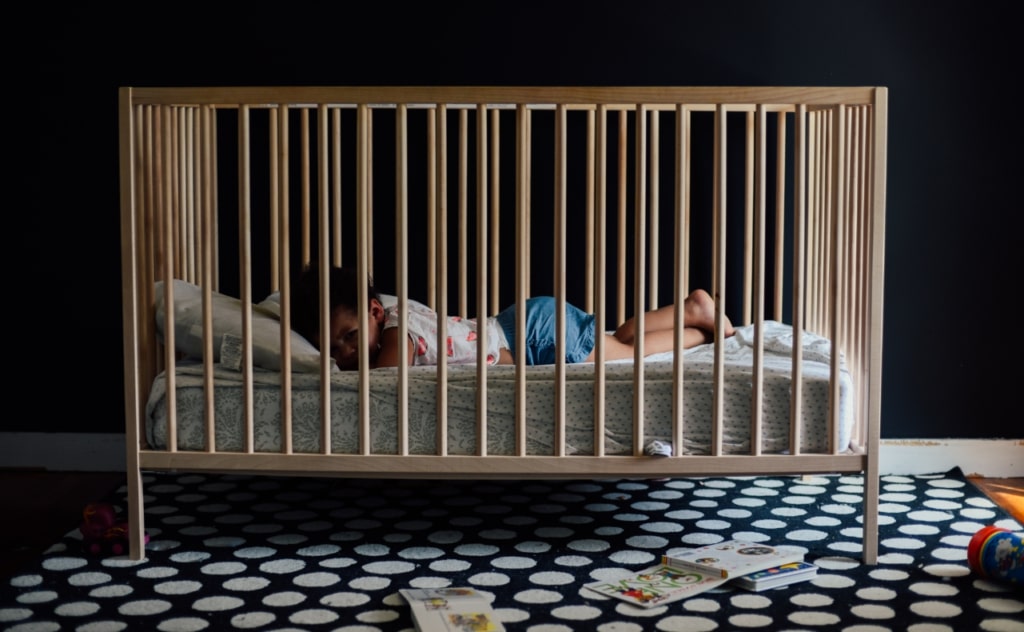Becoming a parent comes with a lot of excitement and discovery. In fact, it is a journey that is enjoyed and relished in every way. However, it also comes with a fair share of challenges; one of which involves sleep training.
For most mothers, a proper night’s sleep is a precious gift; especially when you consider the all-important nighttime feeding sessions. The truth is, a proper night’s sleep depends on getting your baby to sleep first. As you’d expect, this is often stressful as it involves a lot of rocking, cooing, or cuddling. Even with all these techniques, you’d still need a lot of patience because your little one may decide to wake up multiple times for various reasons.
Are you a first-time parent? Have you been struggling with putting your child to bed? Or are you searching for new and effective sleep training methods?

If your answer is yes, you’re at the right spot.
In this article, we’d walk you through everything you need to know about sleep training; what it is, how it works, and techniques to try out.
Let’s Get Started!
Table of contents
First, What Is Sleep Training?
In plain terms, sleep training involves any strategy used to teach your baby to fall asleep with little or no help. Sleep training may be employed at bedtime or after midnight feeding sessions. For most parents, effective sleep training takes away the extra responsibility of having to put your baby to sleep.
When to Start?
As it is with crawling, walking, or even baby food stages, there’s no ‘right’ time to start sleep training. This is because the timeline depends absolutely on your baby and his/her level of development.

However, if you plan to sleep train your child, you should plan to start within the 4th to 6th months of life. It is important to begin sleep training within this window because an older child would have already gotten used to being rocked or nursed to sleep. This way, sleep training may become really difficult to achieve.
Is Sleep Training Really Helpful?
Of course, you may have heard people say that sleep training is all about leaving your baby to cry. It has also been said that it may have certain adverse effects on your baby’s mental health. However, there is no scientific data to back this claim.
Here’s the fact: Sleep training also helps you.
With effective sleep training, both you and your baby will get the rest you need.
Sleep training methods
To help you out on this new and exciting journey, we’ve compiled the following sleep training strategies for you and your little one:
1. Cry It Out
This is a very common method.
In this instance, most parents put their babies to bed and do not intervene if he/she begins to cry. This way, you’re teaching your little one that crying is not an alternative to sleep. After a while, he/she would learn how to sleep without assistance (or fussiness).
What To Do:
- Feed your baby
- Perform all bedtime routines
- Gently place your baby in his/her crib
- Leave the room
However, it is important to remember that you still have to return to your baby’s room at a predetermined feeding time during the night. In addition, you may have to check in on him/her a couple of times in the course of the night to make sure everything is fine.
It is also important to note that the early days of this sleep training method are quite difficult for the mother and child. Nevertheless, it has been proven to be very effective because your little one is able to adapt and adjust.
2. The Ferber method
This is way milder than the cry-it-out method.
In other instances, the Ferber method is called the ‘check and console’ method. This way, you get to tuck your child in and pay regular visits to make sure he/she is fine. During these visits, don’t feed, rock, or even take your baby out of the crib.
Your presence should only serve to reassure your little one that everything is okay.
At first, you can begin with short hourly visits. With time, the interval between visits may extend to three or four hours until your baby no longer depends on your presence to fall asleep.
3. Pick Up, Put Down
This is a rather slow approach and takes more time to achieve the aim of your baby going to sleep independently. In this method, you stay with your baby after putting him/her to bed in the crib. However, you give minimal intervention to make him sleep.
For example, you pat their belly or tap their cheeks to calm them. If they start to cry, you can pick them up from their crib and rock them, but ensure that you lay them back on their crib before they sleep. The aim is for them to sleep on their own, not in your hand.

The con of this method is that older children may cry even more when you pick them up and put them down repeatedly. So, it works better for younger children.
4. The Chair Method
This method involves the use of a chair.

After putting your baby in his crib, you sit on a chair close to him and watch him fall asleep. After this, you should leave the room. When you notice that your baby is awake then you return to the room and sit back on the chair. Every few nights move the chair back further until you’re eventually out of the room.
In this method, you’re not to intervene in case your baby cries. With this method, it may also be difficult for the mother to be consistent.
5. Bedtime Fading
This involves reducing the interventions you provide at bedtime to make your baby sleep until you no longer have to do anything at all. Although this may take a while, with consistency and sustainability, it really works really well.

Another variation of this is altering the bedtime hour. Here, you take note of the time you put your baby to sleep and the time your baby actually sleeps. Once you get your numbers right, you can make the new bedtime hour the time your baby actually dozes off. Then, you gradually reduce this new time bit by bit until you achieve the desired time.
Conclusion
Sleep training works. It really does.
To achieve the desired effects, you can try out one or more of the sleep training methods in this article. With these steps, we’re sure you and your little one are on the right path to proper sleep and healthy life.
Enjoy the journey!

